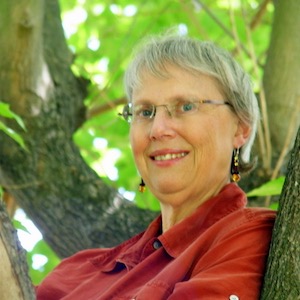Today we’re joined by award-winning author
David B. Coe, who also writes as D.B. Jackson. Under those two names he has
published more than twenty novels and as many short stories. His newest novel, Time’s
Demon, the second volume in his Islevale Cycle, has just been released by
Angry Robot Books. David, welcome.
Thank you for having me on your site!
Tell us about The Islevale Cycle and,
about Time’s Demon in particular.
The Islevale Cycle is a time travel/epic
fantasy series that tells the story of Tobias and Mara, Walkers – time
travelers – who Walk back through time hoping to prevent a devastating war.
Upon their arrival in the past, however, the assassination of their sovereign
traps them in a dark misfuture with the only survivor of the assassination
plot: the sovereign’s infant daughter. They have to keep the princess safe as
the assassins seek to finish their work, and as the two of them seek to
reestablish the rightful line of ascension to the throne.
That’s a very basic overview – there’s a
lot more to the story than that: subplots, secondary characters, a romance or
two, lots of intrigue. In short, I tried to blend in all the ingredients
readers might hope to find in a sprawling epic fantasy. The first book, Time’s
Children, came out last October. Time’s Demon is the second book in
the trilogy, and as such it deepens the story and introduces new perils and
conflicts, while also starting to resolve certain key plot points. Tobias,
Mara, and the infant princess, Sofya, are on the run, pursued by the sovereign’s
killers. They are aided by a variety of characters – humans and “demons,” or
Ancients, as they’re called in Islevale. In particular, this second book
focuses on Droë, a Tirribin, or time demon, who is fascinated by human love in
general, and infatuated with Tobias in particular. She seeks to help him, but
she’s deeply jealous of Mara. And since Tirribin are deadly predators, this is
a problem.
Was this your first time
writing time travel?
Yes, it was, and, as other writers
had warned me, writing time travel will make one’s brain explode. The problem
with time travel is not just the various contradictions and anachronisms that
crop up when events are taking place in different times and timelines. That’s
part of the challenge of writing a time travel story. I enjoyed that, and I
think I handled these issues pretty well. But the toughest thing about time
travel as a narrative tool is that it lead to endless do-overs. No plot point
is permanent if your time traveling characters can go back and change the past.
So in creating the rules for my
time travel, I tried to avoid this problem. First of all, not everyone can Walk
through time. It’s an ability that first manifests in childhood, and then must
be honed through years of training. Second, Walkers need a device known as a
chronofor in order to travel through time. And chronofors, which sort of
resemble pocket watches, are expensive and rare. Third, the chronofor is the only thing
Walkers can carry when they travel back in time. They can carry no weapons, no
money, and not even a stitch of clothing. Finally, and most importantly, for
each day or year Walkers travel back in time (and forward again to their
original moment in history) they age that amount. So I omitted a key detail
from my summary: Tobias and Mara begin the book as fifteen-year-olds. They
travel back in time fourteen years, and therefore arrive as 29-year-olds — at
least to all outward appearances. Their emotions and intellects remain the
same. If they then Walk back to their rightful time, they would age another
fourteen years.
Building such a steep cost into my
time travel ensures that my Walkers can’t just Walk at will. It limits the
impact they can have – both on my world and on my plotting. I also chose to
handle time travel in this way for narrative reasons. I thought it would be
interesting to have my hero and heroine look like adults, to saddle them with
adult responsibilities (protecting and caring for a child), but at the same
time keep their minds and emotions much as they were when they were kids
training to be court Walkers.
What’s been the greatest
challenge in writing these books?
I’m what’s known in writing
circles as a planner. I tend to outline my novels. Not in tremendous detail,
but with at least a brief paragraph for each chapter. These books, however,
defied all my attempts to outline them. And I tried, I really did. With the
first book, I spent several months trying to jot down at least some sense of
the narrative path the story would follow. I just couldn’t do it. The same was
true of Time’s Demon. For some reason, the books just didn’t want to be
outlined. Or at least that’s my conclusion; easier to blame them than me! For
what it’s worth, I’ve had the same problem with Time’s Assassin, the
final book in the series, which I’m working on now.
Honestly, I don’t know why I’ve
struggled so with the plotting. It may be that the complexities of time travel
in a multi-strand, multi-point-of-view novel made that sort of advanced
planning impossible. I wouldn’t have thought so, though, and the fact is those
complexities would have been far easier to deal with had I been able to
outline. Whatever the reason, plotting the books was a struggle. Now, in the
end it all worked out. Time’s Children was the best reviewed book I’ve
ever published, and I think Time’s Demon is even better. But it took a
lot of work, and massive edits and revisions of the initial drafts to get
there.
You began your career writing
epic fantasy [The LonTobyn Chronicle, Winds of the Forelands, Blood of the
Southlands] and then moved away from it for a time. What brought you back to
this subgenre?
I suppose you could say that the same impulse that pulled me away from writing epic fantasy brought me back to it. As you say, I started out writing three epic fantasy series – eleven novels in all. By the time I finished Blood of the Southlands, I was ready for something different. So I turned to urban fantasy – historical urban in my Thieftaker Chronicles (written as D.B. Jackson), contemporary urban in The Case Files of Justis Fearsson (written as David B. Coe). These were very different books for me. They were essentially mysteries, detective novels really, with magical ingredients. They were leaner books. Generally speaking, each had one point of view character, and though they had subplots, these tended to feed directly into the central mystery. Put another way, all of the Thieftaker and Fearsson novels were very directed and streamlined. And I loved writing them.
Websites: http://www.DavidBCoe.com / www.dbjackson-author.com
Facebook: https://www.facebook.com/DBJacksonAuthor
Twitter: @DBJacksonAuthor







